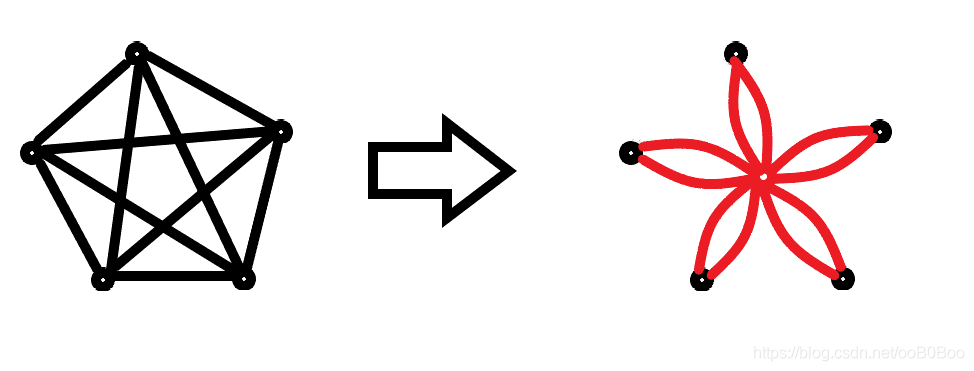题目链接
题解:
由于图中一个区块就是一个完全图,那么最坏的情况下有
O
(
n
2
)
O(n^2)
O(n2)条边!
但是,每个完全图的边权值都相同,那么可以将一个完全图的
O
(
n
2
)
O(n^2)
O(n2)边巧妙地减为
O
(
n
)
O(n)
O(n)条!
具体的,在每个完全图中间可以新加一个虚点,将通往虚点的边权值设为 0 ,将虚点的出边设置为原来完全图中各边的权值,那么就可以在减少边的同时保证这个完全图中每个点到另一个点的距离不变啦!

代码:
#include <bits/stdc++.h>
using namespace std;
typedef long long ll;
typedef unsigned long long ull;
#define PI acos(-1.0)
#define INF 0x3f3f3f3f3f3f3f3f
#define P pair<ll, int>
#define debug(x) cout << #x << ": " << x << endl
#define fastio ios::sync_with_stdio(false), cin.tie(0)
const int mod = 1e9 + 7;
const int M = 1000000 + 10;
const int N = 200000 + 10;
int t, n, m;
vector<P> G[N];
ll d1[N], dn[N];
int tot;
void dijkstra(int st, ll d[])
{
for(int i = 1; i <= tot; i ++) d[i] = INF; d[st] = 0;
bool vis[N] = { false };
priority_queue<P, vector<P>, greater<P> > que;
que.push(P{0, st});
while(que.size()) {
int now = que.top().second;
ll dis = que.top().first;
que.pop();
if(vis[now]) continue;
vis[now] = true;
for(int i = 0; i < G[now].size(); i ++) {
if(dis + G[now][i].first < d[G[now][i].second]) {
d[G[now][i].second] = dis + G[now][i].first;
que.push(P{d[G[now][i].second], G[now][i].second});
}
}
}
}
int main()
{
scanf("%d", &t);
for(int cas = 1; cas <= t; cas ++) {
scanf("%d %d", &n, &m);
for(int i = 1; i <= n + n; i ++) G[i].clear();
tot = n;
for(int i = 1, ti, si; i <= m; i ++) {
scanf("%d %d", &ti, &si);
tot ++;
for(int j = 1; j <= si; j ++) {
int id;
scanf("%d", &id);
G[tot].push_back(P{ti, id});
G[id].push_back(P{0, tot});
}
}
dijkstra(1, d1);
if(d1[n] == INF) {
printf("Case #%d: Evil John\n", cas);
continue;
}
dijkstra(n, dn);
int ans = INF, node[N], cnt = 0;
for(int i = 1; i <= n; i ++) {
if(max(d1[i], dn[i]) < ans) {
ans = max(d1[i], dn[i]);
cnt = 0;
node[++cnt] = i;
} else if(max(d1[i], dn[i]) == ans) {
node[++cnt] = i;
}
}
printf("Case #%d: %lld\n", cas, ans);
for(int i = 1; i <= cnt; i ++) {
printf("%d%c", node[i], i == cnt ? '\n' : ' ');
}
}
return 0;
}
cs


